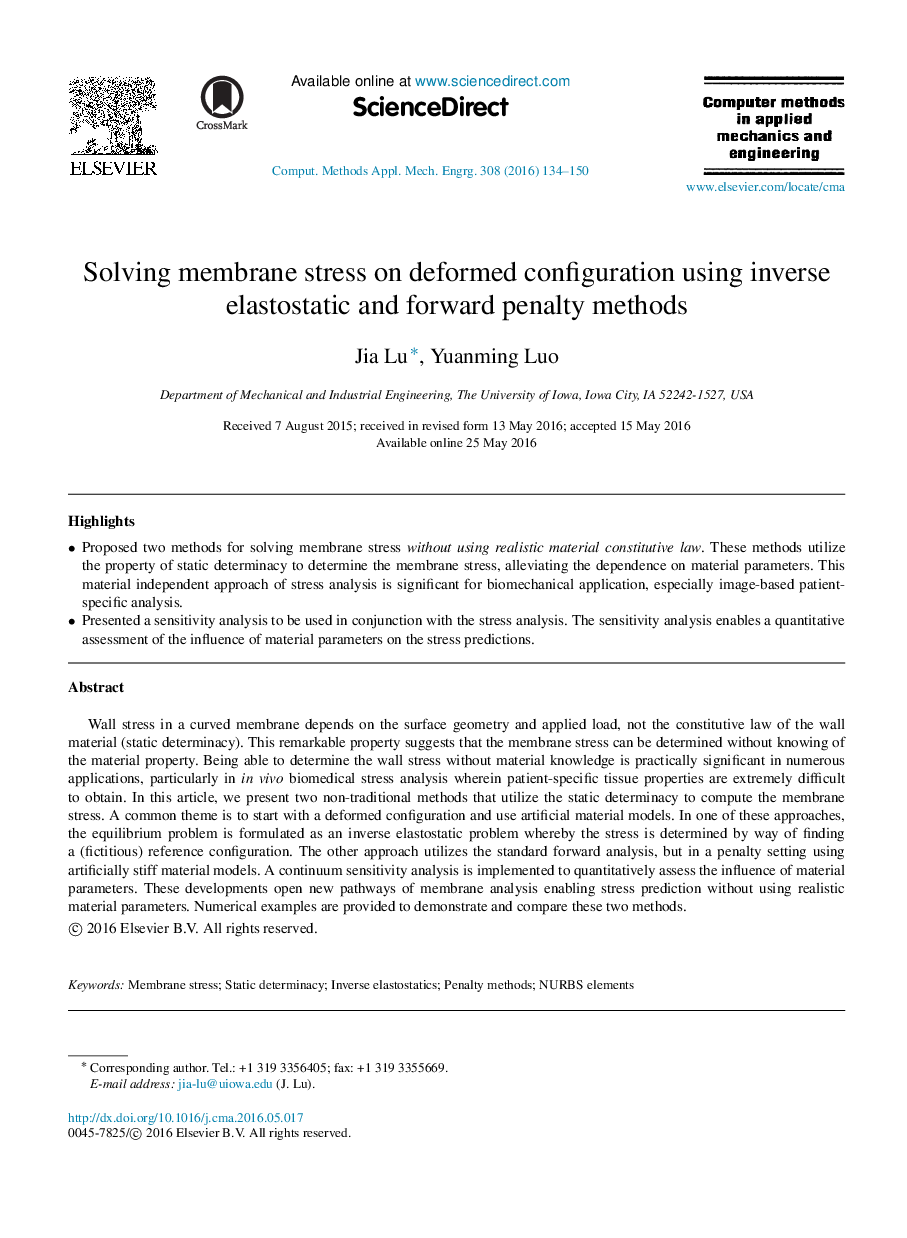| Article ID | Journal | Published Year | Pages | File Type |
|---|---|---|---|---|
| 6915963 | Computer Methods in Applied Mechanics and Engineering | 2016 | 17 Pages |
Abstract
Wall stress in a curved membrane depends on the surface geometry and applied load, not the constitutive law of the wall material (static determinacy). This remarkable property suggests that the membrane stress can be determined without knowing of the material property. Being able to determine the wall stress without material knowledge is practically significant in numerous applications, particularly in in vivo biomedical stress analysis wherein patient-specific tissue properties are extremely difficult to obtain. In this article, we present two non-traditional methods that utilize the static determinacy to compute the membrane stress. A common theme is to start with a deformed configuration and use artificial material models. In one of these approaches, the equilibrium problem is formulated as an inverse elastostatic problem whereby the stress is determined by way of finding a (fictitious) reference configuration. The other approach utilizes the standard forward analysis, but in a penalty setting using artificially stiff material models. A continuum sensitivity analysis is implemented to quantitatively assess the influence of material parameters. These developments open new pathways of membrane analysis enabling stress prediction without using realistic material parameters. Numerical examples are provided to demonstrate and compare these two methods.
Keywords
Related Topics
Physical Sciences and Engineering
Computer Science
Computer Science Applications
Authors
Jia Lu, Yuanming Luo,
